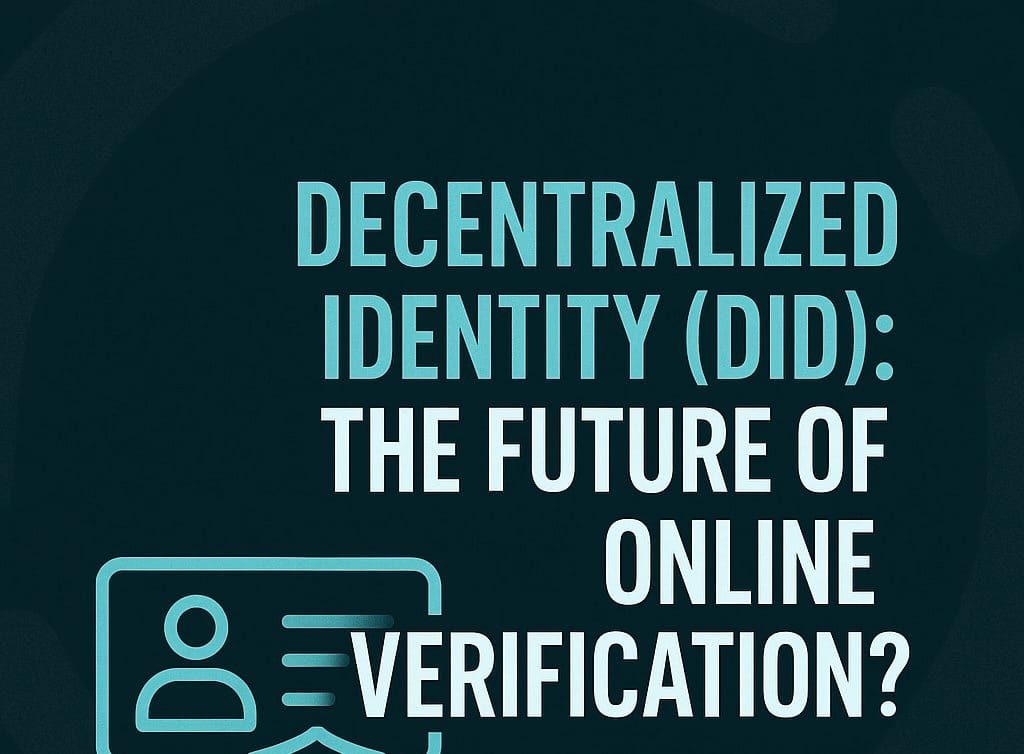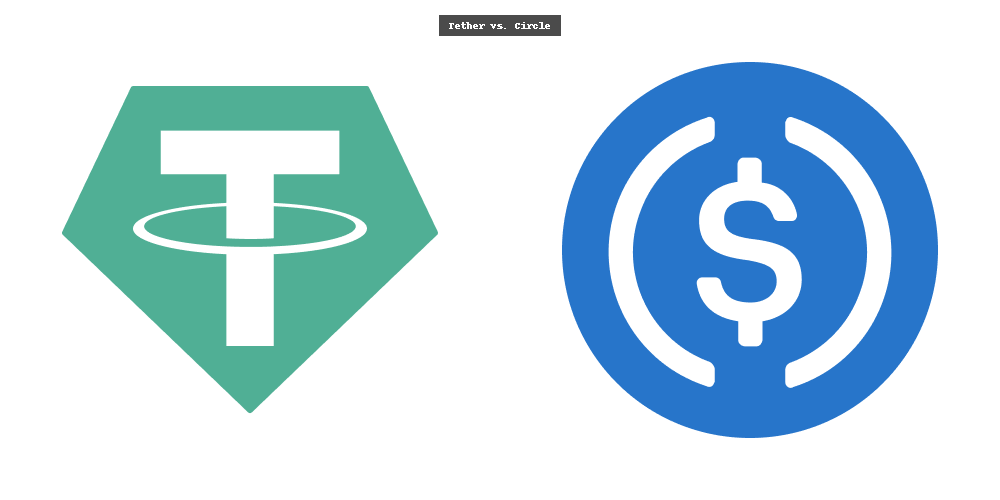The Rise of Decentralized Identity (DID) Systems in Cryptocurrency: A 2025 Trend to Watch

Decentralized Identity
In 2025, the cryptocurrency landscape is evolving at a breakneck pace, driven by technological innovation and a growing demand for user empowerment. Among the most transformative trends shaping the industry is the rise of Decentralized Identity (DID) systems. These systems are redefining how individuals interact with blockchain networks, offering a secure, user-controlled approach to identity management that aligns with the ethos of decentralization. I’ll explore the emergence of DID systems, their integration with cryptocurrency, their potential to reshape digital ecosystems, and why they are a critical trend to watch in 2025.
What Are Decentralized Identity Systems?
Decentralized Identity (DID) systems are frameworks that enable individuals to create, control, and manage their digital identities without relying on centralized authorities like governments, corporations, or traditional financial institutions. Built on blockchain or distributed ledger technology, DIDs allow users to generate unique, cryptographically secure identifiers that can be used to authenticate their identity across various platforms and services.
Unlike traditional identity systems, which store personal data in centralized databases vulnerable to breaches, DIDs empower users to store their identity data on their own devices or in decentralized storage solutions. Users can selectively share specific pieces of information such as a verified age or proof of address, without exposing their entire identity. This is achieved through verifiable credentials (VCs), which are digital attestations issued by trusted entities and cryptographically signed to ensure authenticity.
The core principles of DID systems are user sovereignty, privacy, and interoperability. These align seamlessly with the cryptocurrency ecosystem, where trustlessness and decentralization are foundational values.
The Convergence of DID and Cryptocurrency
Cryptocurrency and DID systems are a natural fit. Blockchain, the underlying technology for most cryptocurrencies, provides the decentralized infrastructure needed for secure identity management. In 2025, we’re seeing an increasing number of blockchain projects integrating DID systems to enhance user experience, improve security, and enable new use cases. Here’s how DIDs are transforming the cryptocurrency space:
1. Enhanced Wallet Security and Recovery
Cryptocurrency wallets, which store private keys for accessing digital assets, are a prime target for hackers. Traditional wallet recovery methods, such as seed phrases, are cumbersome and prone to human error. DID systems offer a solution by tying wallet access to a user’s decentralized identity.
For example, a DID can be used to authenticate a user across multiple devices, reducing reliance on single points of failure like seed phrases. If a user loses access to their wallet, they can recover it using their DID, which is verified through a network of trusted attestations rather than a centralized authority. Projects like Ceramic Network and uPort are pioneering DID-based wallet recovery, making crypto more accessible to non-technical users in 2025.
2. Streamlined KYC/AML Compliance
Know Your Customer (KYC) and Anti-Money Laundering (AML) regulations are a significant hurdle for cryptocurrency exchanges and DeFi platforms. Traditional KYC processes require users to submit sensitive personal information repeatedly, creating privacy risks and friction. DID systems streamline compliance by enabling reusable, privacy-preserving credentials.
With a DID, a user can obtain a verifiable credential from a trusted issuer (e.g., a government or accredited institution) confirming their identity or compliance status. They can then share only the necessary information with a crypto platform such as proof that they are over 18 or not on a sanctions list without revealing their full identity. This reduces onboarding time, enhances privacy, and aligns with regulatory requirements. In 2025, platforms like Polygon ID and SelfKey are leading the charge in DID-based KYC solutions.
3. Decentralized Governance and DAOs
Decentralized Autonomous Organizations (DAOs), which rely on community governance, are increasingly adopting DID systems to verify participant identities. DIDs ensure that voting and decision-making processes are secure and resistant to Sybil attacks, where malicious actors create multiple fake identities to manipulate outcomes.
By linking a DID to a verified human identity, DAOs can implement “one person, one vote” systems while preserving pseudonymity. This fosters trust and fairness in decentralized governance. In 2025, DAOs like Aragon and Gitcoin are experimenting with DID-based identity solutions to enhance their operational integrity.
4. Cross-Chain and Cross-Platform Interoperability
The cryptocurrency ecosystem is fragmented, with thousands of blockchains and platforms operating in silos. DID systems provide a universal identity layer that enables seamless interaction across chains and services. A single DID can be used to authenticate a user on Ethereum, Solana, or a DeFi protocol, reducing the need for multiple accounts and passwords.
This interoperability is critical for the mass adoption of cryptocurrency. In 2025, standards like the W3C’s DID specification and projects like DIF (Decentralized Identity Foundation) are driving the development of interoperable identity frameworks, making it easier for users to navigate the crypto landscape.
Key Benefits of DID Systems in Cryptocurrency
The integration of DID systems into cryptocurrency offers several compelling benefits:
Privacy and Control
DIDs give users granular control over their data, allowing them to share only what’s necessary for a transaction or interaction. This minimizes the risk of data breaches and aligns with the privacy-first ethos of cryptocurrency.
Security
By leveraging blockchain’s cryptographic properties, DIDs are highly resistant to tampering and fraud. Users can trust that their identity credentials are authentic and verifiable.
User Experience
DIDs simplify interactions with crypto platforms by reducing the need for repetitive logins, KYC processes, or manual key management. This lowers barriers to entry for new users.
Trust in Decentralized Systems
In trustless environments like DeFi and DAOs, DIDs provide a mechanism for verifying identities and credentials without relying on intermediaries, fostering confidence in decentralized ecosystems.
Challenges and Risks
Despite their promise, DID systems face several challenges in 2025:
Adoption and Scalability Widespread adoption of DIDs requires buy-in from users, developers, and institutions. Many users remain unfamiliar with the concept, and integrating DIDs into existing crypto platforms can be technically complex. Scalability is another concern, as blockchain-based DID systems must handle millions of identities without compromising performance.
Regulatory Uncertainty While DIDs can streamline KYC/AML compliance, regulators may be wary of systems that prioritize pseudonymity and user control. Striking a balance between privacy and regulatory compliance will be critical for mainstream adoption.
Security Risks Although DIDs are secure by design, they are not immune to risks. If a user’s private key or DID is compromised, their identity could be misused. Educating users about secure key management remains a priority.
Interoperability Gaps While standards like W3C’s DID specification aim to ensure interoperability, not all DID systems are compatible with each other. Fragmentation could hinder the seamless user experience that DIDs promise.
The Road Ahead: Why DIDs Are a 2025 Trend to Watch
In 2025, DID systems are poised to become a cornerstone of the cryptocurrency ecosystem. As blockchain adoption grows, the need for secure, user-controlled identity solutions will only intensify. Several factors are driving this trend: ☆ Institutional Support: Major players like Microsoft, IBM, and Consensys are investing in DID infrastructure, signaling confidence in its potential. Their involvement is accelerating the development of enterprise-grade DID solutions for crypto and beyond.
☆ Regulatory Push for Privacy: Global data protection regulations, such as GDPR and CCPA, are pushing companies to adopt privacy-preserving technologies. DIDs offer a compliant way to manage identities in the crypto space.
☆ User Demand for Sovereignty: Crypto users, who value decentralization and autonomy, are increasingly demanding tools that give them control over their data. DIDs resonate with this ethos, making them a natural fit for the crypto community.
☆ Emerging Use Cases: Beyond cryptocurrency, DIDs are being explored for supply chain tracking, healthcare, and digital voting. These cross-industry applications are raising awareness and driving investment in DID technology.
Conclusion
The rise of Decentralized Identity (DID) systems in 2025 marks a pivotal moment for the cryptocurrency industry. By empowering users with secure, private, and interoperable identity solutions, DIDs are addressing longstanding challenges in wallet security, compliance, governance, and user experience. While hurdles like adoption and regulatory uncertainty remain, the momentum behind DIDs fueled by institutional support and user demand suggests they will play a transformative role in the future of crypto.
As we move deeper into 2025, stakeholders in the cryptocurrency ecosystem, developers, investors, and users alike should closely monitor the evolution of DID systems. They represent not just a technological innovation but a paradigm shift toward a more decentralized, user-centric digital world. In a landscape defined by trustlessness and empowerment, DIDs are the key to unlocking the full potential of cryptocurrency.



Comments ()